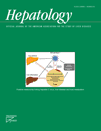Reply:†
Potential conflict of interest: Nothing to report.
- 1.
The increased biliary secretion of NO upon UDCA infusion results from inducible NO synthase up-regulation. In parallel, the secretion of S-nitrosothiol species [particularly those species of a low molecular weight (<10 kDa)] is significantly enhanced.
- 2.
The secretion of NO species after UDCA infusion depends on glutathione because it is virtually abolished by the blocking of glutathione synthesis, even though the hepatic NO synthase activity increases to levels similar to those found in UDCA-infused rats with normal glutathione synthesis.
- 3.
Glutathione and glutathione conjugates are known to be secreted to the canaliculi through the adenosine triphosphate–binding cassette C2 (Abcc2)/multidrug resistance–associated protein 2 (Mrp2) pump; indeed, transport mutant (TR−) rats with a mutation in Mrp2 exhibit defective canalicular transport of these compounds.1 We showed that upon UDCA infusion, the secretion of S-nitrosothiol and low-molecular-weight S-nitrosothiols was reduced in TR− rats versus normal rats. These data indicate that the glutathione carrier Abcc2/Mrp2 contributes to biliary NO secretion and support the notion that NO biliary secretion occurs in the form of a glutathione conjugate, that is, GSNO.
- 4.
Evidence supporting the choleretic effect of GSNO in bile duct epithelial cells is provided.
The most important issue raised by Tsikas et al. concerns mass spectrometry analysis. We basically agree that a detailed study, as suggested, is required to unequivocally assign the molecular species that may be related to GSNO metabolism. Considering the evidence accumulated in our study (including the aforementioned evidence), we wanted to detect GSNO in bile by mass spectrometry to provide additional support. Being aware of the limited stability of GSNO and the low concentration of this molecule in bile, we decided to analyze fresh bile samples (within 10 minutes of extraction) by direct infusion instead of using more complex analytical procedures that could have provided more precise molecular information but at the expense of increasing sample manipulation with the concomitant risk of reducing the concentration of the analyte of interest below the detection limit. Our simple analysis was able to detect the ion mass-to-charge ratio of 337.25, which, as mentioned by Tsikas et al., can be assigned to GSNO. On the other hand, the assignment of the ion mass-to-charge ratio of 319.2 to a GSNO species resulting from the loss of a water molecule (18 Da) is speculative and should be considered just an interpretation of the observed result. We do agree that further experiments are required to confirm the chemical nature of this ion. Having said that and having considered all the evidence provided in our article,2 we consider the presence of GSNO in bile and its physiological relevance to have been consistently proven.
References
Carlos M. Rodriguez-Ortigosa Ph.D.* , Fernando Corrales Ph.D. , Juan F. Medina M.D., Ph.D.* , Jesús Prieto M.D., Ph.D.* , * Division of Hepatology and Gene Therapy, Center for Applied Medical Research, University of Navarra, Pamplona, Spain, CIBERehd, Pamplona, Spain, Liver Unit, University of Navarra Clinic, Pamplona, Spain.




